
Dad Falls Off Cruise Ship And Recounts The Epic Way He Stayed Alive
Meeting James
James, a hardworking and dedicated father, lived in Valley, Alabama, where he worked as a construction worker. His main objective was to secure a stable and comfortable life for his family, particularly focusing on the needs of his young daughter. His everyday life was marked by simplicity and a deep sense of honesty, punctuated by rare moments of leisure that he passionately chose to share with those he held dear, cherishing each second spent in the warmth of family ties.

As Thanksgiving of 2022 drew closer, James had plans to make the holiday truly memorable. Instead of a small-scale gathering at home, he orchestrated an extensive family reunion that included relatives from his mother's side. His driving motivation was not just to feast, but to foster a genuine sense of familial unity, reconnection, and bonding.
The Carnival Valor
During that year, the entire family was excited about celebrating Thanksgiving in a grand manner. James's parents took the initiative to reserve tickets for a lavish cruise aboard the Carnival Valor, starting from New Orleans and traveling to Cozumel, Mexico. All family members looked forward to this remarkable chapter in their lives.
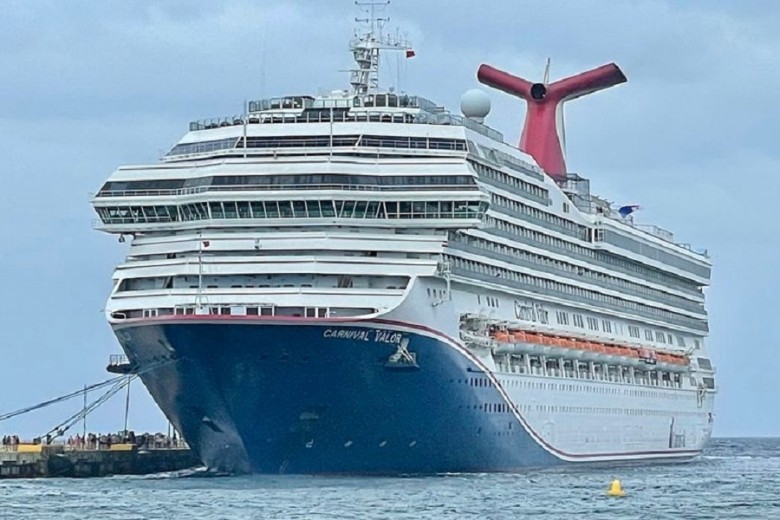
The grand family voyage had been eagerly anticipated for months. Everyone was looking forward to the joyous reunion, with discussions of deck parties, excursions, and family dinners. However, they were unprepared for the shocking events that would soon disrupt their idyllic expectations.
Setting off
On November 23, 2022, James and his family boarded the Carnival Valor in New Orleans. After settling into their cabins, James felt a sense of relaxation wash over him. He was eager to fully immerse himself in the sea-bound escape, seeking out activities and opportunities to bond with his family.
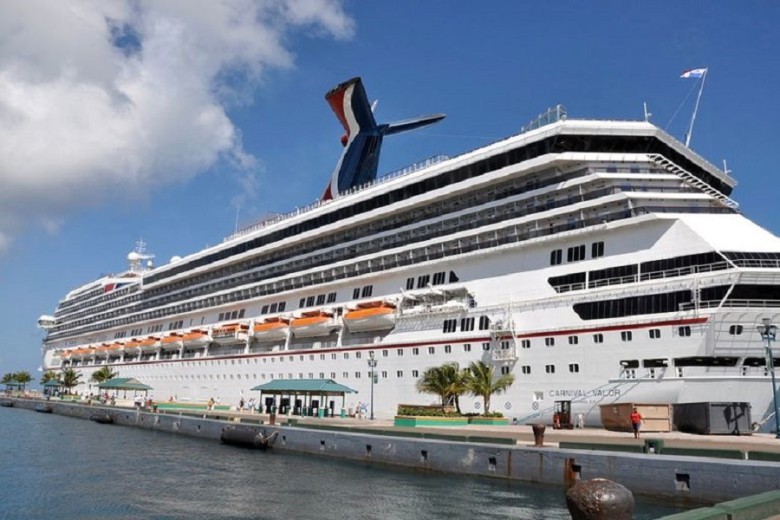
The ship itself was a sanctuary, perfectly designed for leisure. When James stepped out of his cabin that evening, he was in high spirits. He joined his family for cocktails, expecting a perfect evening filled with relaxation and celebration.
"I had some beers and wine"
During an exclusive interview with People Magazine, James shared personal insights about that first night aboard the ship. "The evening after we had pulled out from the New Orleans port, I felt the urge to soak in the festive atmosphere. With the sea breeze caressing my face and the gentle roll of the ship under my feet, I allowed myself the luxury of a few beers and glasses of wine," he confided in the publication.

After participating in an air guitar contest and winning a free drink, James' memory of the evening became clouded. He could not remember what happened after that lighthearted moment, leading him into a series of unnerving events.
Last memory
As the night progressed, James excused himself to use the restroom facilities. He vaguely remembered informing his sister about his departure but had no clear recollection of the events that followed.
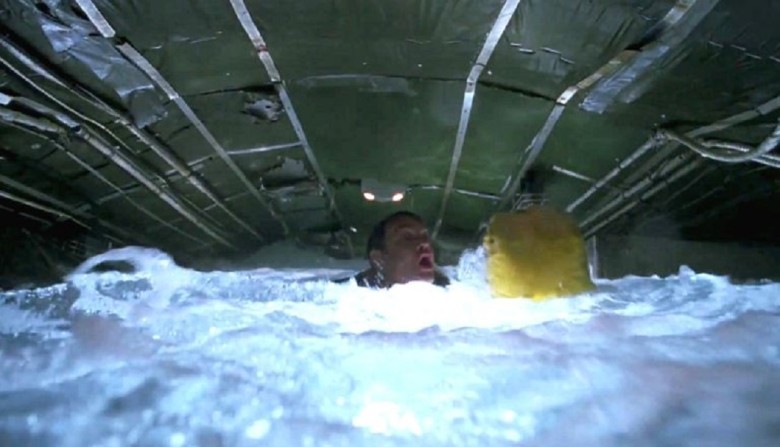
The last memory he could grasp was his triumphant air guitar performance. After that, a dark void surrounded his recollection. He could not remember what happened next, and this gap in his memory led to a life-threatening scenario he never anticipated.
"Out of sight"
Reflecting on the dramatic twist in his story, James provided a haunting account to People Magazine. "The next moment of lucid awareness came with the shocking realization that I was floating, completely alone, in the middle of the sea. The ship was nowhere in sight, already having vanished beyond the horizon. I felt an eerie blend of disbelief and gut-wrenching terror, as it dawned on me: 'This is unimaginable, yet this is my horrifying reality. I am literally lost at sea.'"

Somehow, James found himself tumbling over the side of the Carnival Valor and plunging into the dark waters of the Gulf of Mexico. The circumstances were inexplicable even to him. To this day, he struggles with a lack of clarity or understanding, making his survival story even more bewildering.
Amplifying the terror
The complete lack of memory surrounding James's fall into the open water only heightened the fear and confusion of his life-altering experience. He was unsure of how he ended up overboard, and the events that occurred immediately afterward were a mystery to him, intensifying the already terrifying situation.
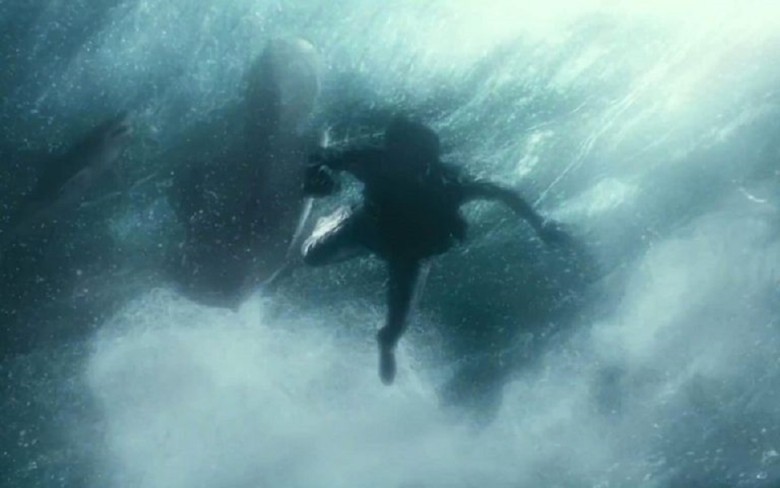
In those initial moments after falling, James was disoriented and vulnerable to a range of risks, including drowning and hypothermia. During an emotional interview with Good Morning America, James reflected on the factors that may have contributed to his miraculous survival. Each possibility he considered only added to the sense of wonder and disbelief surrounding his story.
"Something was holding me up"
James also shared a poignant aspect of his harrowing experience. "Floating has never come naturally to me. Yet, in a circumstance that defies logic, something or someone managed to keep me afloat during the time I was unconscious in the water. It’s a thought I cannot escape—that perhaps there was some form of divine intervention at play, a force that miraculously sustained my life."
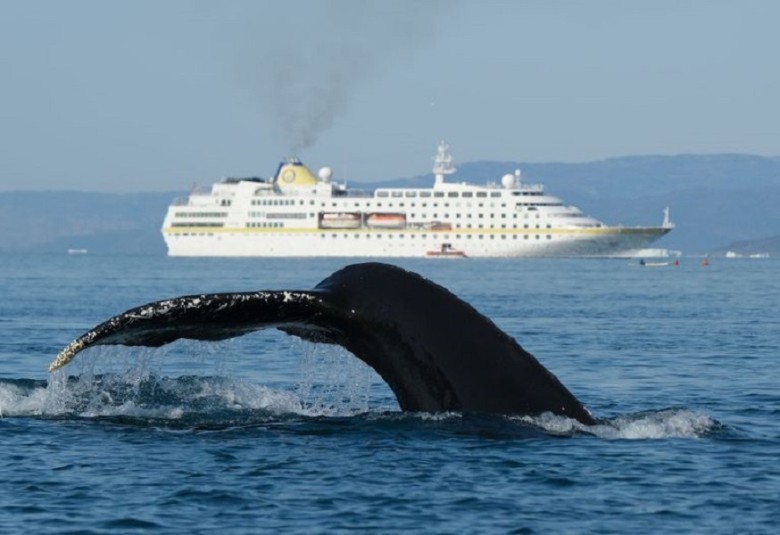
The surreal nature of the situation cannot be ignored. There may have been specific factors or conditions that unknowingly contributed to James's survival, providing an unexpected shield against what should have been certain death. The complex puzzle of contributing elements, from water temperature to James's state of mind, defies easy explanation.
Staying calm
Survival expert Cat Bigney, offering her insights during a discussion with Insider, emphasized the importance of maintaining calm during an emergency. Panic can increase heart rate, cloud judgment, and decrease the chances of survival. By staying composed, the likelihood of making it through a horrifying experience is significantly improved.

Bigney also highlighted the risk of lung damage when individuals suddenly find themselves in water. The instinctual panic reaction to gasp for air can lead to inhaling water, resulting in near-instantaneous lung damage. Remaining calm is crucial in extreme survival situations, preventing further harm and improving the chances of survival.
An unconscious advantage
In a twist of fate, James's unconscious state while floating on the water's surface may have inadvertently saved his life. Unlike those who are conscious when they fall into the water and often inhale water due to panic-induced adrenaline rushes, James experienced different circumstances. Ironically, his lack of awareness may have shielded him from the damaging consequences of an overactive survival instinct. In extreme situations, fight or flight responses can be more harmful than helpful, increasing the risk of inhaling water and drowning.
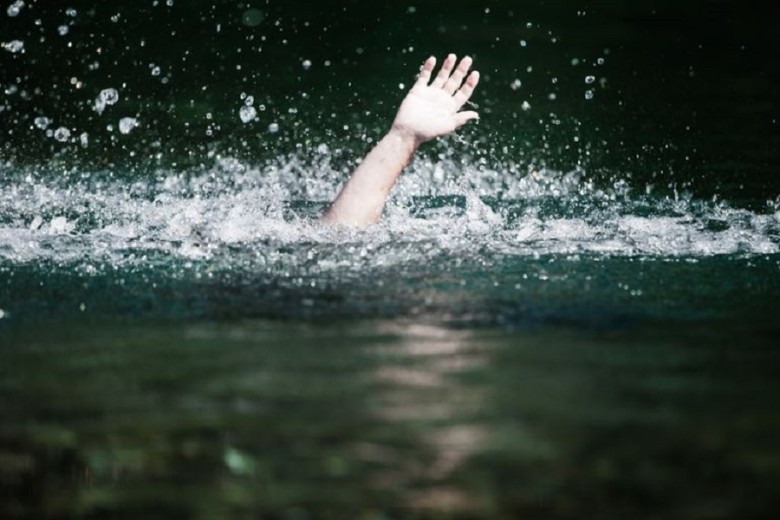
James's ability to float face-up in the water was a stroke of luck that likely played a pivotal role in his survival. It's important to recognize that such occurrences are extremely rare. According to the Cruise Lines International Association, only 212 individuals were reported as having fallen overboard from cruise ships between 2009 and 2019. James's experience is an outlier and serves as a reminder that while headline-grabbing, incidents like these are statistical anomalies in the cruise industry.
Overcoming the odds
When considering the grim statistics surrounding maritime emergencies, James's survival stands out as extraordinary. While 164 individuals faced similar life-threatening situations and did not survive, James beat the odds against the cruel forces of the ocean.

The margin for survival in such circumstances is often razor-thin, making his return to safety truly remarkable. His story belongs to a narrow category of maritime survival stories, highlighting the miraculous nature of his escape from the perils of the sea.
The Battle for Survival
Awakening in the water, James immediately felt the weight of the challenge ahead. Staying afloat was a matter of life and death, and he knew that even the slightest misstep could be disastrous. Every passing second became crucial, reinforcing his understanding that constant movement was the key to surviving his precarious situation.
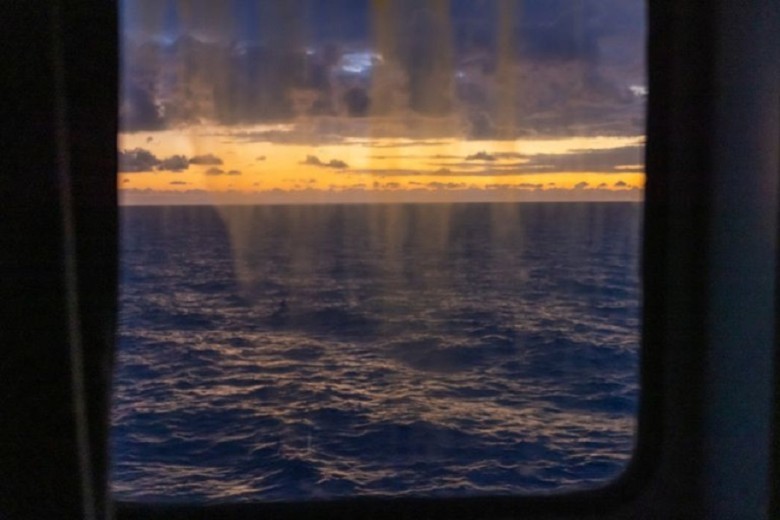
Picture the scene: thrown into the vast, tumultuous ocean with no one around to hear your cries for help. That was the terrifying reality James faced. Each crash of the waves echoed his internal turmoil, reminding him of his vulnerability. While it's impossible for us to fully comprehend the psychological stress he endured, it's safe to assume it was immense. Any sense of control he had previously held was swept away, replaced by a deep understanding of the precariousness of his circumstances. The vastness of the ocean served as a stark reminder of his vulnerability, amplifying the fear and stress that consumed him in those critical moments.
Confronting Deep-Rooted Fears
Adding to James's struggle against the elements was his lifelong fear of drowning. This fear, which had haunted him since childhood, became a powerful motivator as he confided in a subsequent interview with People Magazine. Confronting his worst fear under the worst possible conditions became a driving force that pushed him forward, despite exhaustion and overwhelming terror. The irony of facing his fear in such a dire situation was not lost on James, but it became the impetus that propelled him through his ordeal.

Survival experts have closely examined James's story, engaging in vigorous debates about the most effective tactics in maritime emergencies. Did James's actions align with recommended survival techniques, or was he simply incredibly lucky? These questions continue to drive extensive discussions as experts analyze his every move, seeking potentially life-saving insights for future incidents. Maritime survival is a complex field influenced by numerous variables, such as water temperature and individual endurance, and James's case offers valuable lessons in human resilience and adaptability.
Finding a Balance
According to survival expert Cat Bigney, the optimal strategy in such a dire situation would involve alternating between swimming and floating. This approach aims to conserve energy and prolong survival opportunities, rather than depleting reserves by constantly swimming, which could prove counterproductive. Striking a balance between exertion and rest enhances the likelihood of being rescued before succumbing to exhaustion.

James's swift decision to discard his heavier clothing may seem simple, but it was a life-saving choice made in the nick of time. Recognizing that his clothing was weighing him down, impeding his ability to float and swim effectively, he acted quickly. This intuitive move to increase his buoyancy couldn't have come at a better moment. It tipped the scales slightly in his favor, reinforcing the narrative of his miraculous survival against overwhelming odds.
The Value of a Floating Device
Building on Bigney's expert opinion, the most valuable asset James could have found during this grueling trial would have been a floating object to cling to. Such an object would have significantly improved his chances of survival, allowing him to conserve energy and act as a focal point in his battle against the elements.

One survival expert highlighted how even the smallest flotation device can be a game-changer in desperate circumstances. Whether it's a nearby floating object or something improvised, these devices can alleviate physical exhaustion and keep one's head above water. The expert emphasized that in the unforgiving expanse of open water, especially when battling fatigue, these flotation aids could mean the difference between life and death. They provide crucial moments of rest, vital for both the body and mind, relieving the energy-draining struggle of staying afloat.
A Harrowing Realization
Unfortunately for James, no such opportunity presented itself, leaving him to rely on his last reserves of energy to stay above water. Amid this struggle for survival, a troubling thought likely crossed his mind: had anyone on board the Carnival Valor noticed his absence? Not knowing whether he was even considered missing added another layer of psychological torment to his physical battle.

Meanwhile, as the ship continued on unknowingly, it was James's sister who first sensed that something was terribly wrong. This sudden realization shattered the joy of the evening, replaced by an atmosphere thick with worry and urgency. Her awareness served as an urgent wake-up call, spurring the family into action as they grappled with the incomprehensible idea that one of their own was lost at sea.
Desperate Measures
Once the alert was raised, James's sister wasted no time informing the rest of the family. Together, they quickly approached the ship's crew to report James's alarming disappearance. Their collective action set off a chain reaction that would eventually lead to an intensified search and rescue effort. However, with every passing moment, time was slipping away, and James found himself in a race against the clock as he battled against the relentless tides of the open sea.
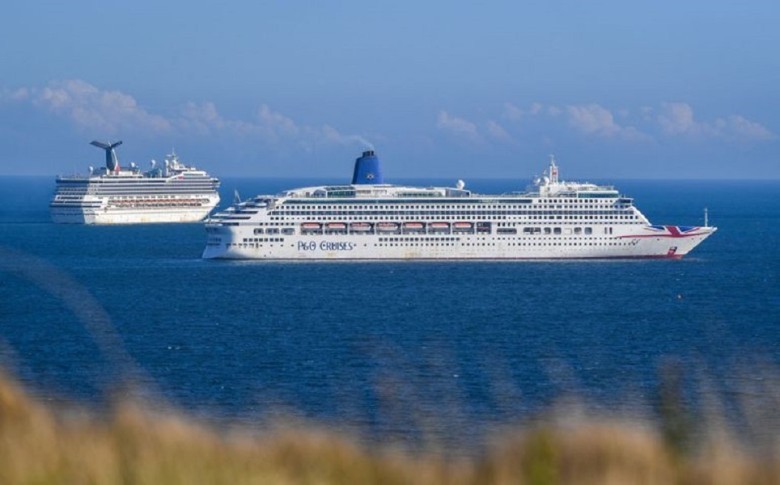
Upon learning of James's overboard situation, the crew of the Carnival Valor acted swiftly and contacted the U.S. Coast Guard to initiate a full-scale search and rescue operation. The urgency of the situation was palpable throughout the ship, with both crew and passengers feeling the weight of the unknown. The daunting question lingered in everyone's mind: Where could James possibly be within the vast expanse of the ocean? Time became an invaluable commodity, and with each passing minute, the grim reality of their predicament intensified.
A Daunting Search
When the Coast Guard finally received the distress call, James had already been missing at sea for over twelve hours. Conducting a search under such circumstances proved to be a difficult task. The Gulf of Mexico, where James was adrift, presented vast and expansive waters, making the task of locating one individual an immense challenge. The sheer magnitude of the area complicated matters significantly, decreasing the likelihood of a successful search and rescue operation. Thus, the urgency and gravity of the situation were further heightened, as every minute passed with James still unaccounted for.
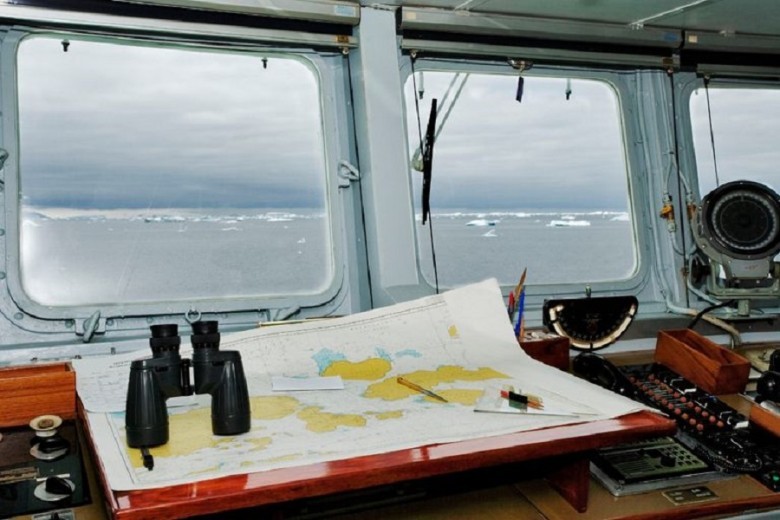
For a more in-depth understanding of the complexities involved in search and rescue operations at sea, Lieutenant Seth Gross provided valuable insights during an interview with Good Morning America. He shed light on the logistical hurdles, split-second decision-making, and strategic considerations that played a crucial role in such complex operations. Gross emphasized that in situations as perilous as this, every decision had life-or-death consequences.
To demonstrate the enormity of the challenge faced by the search and rescue operation, Gross revealed in a television news program interview that they were dealing with an area spanning over 7,000 square miles of ocean. This staggering figure highlighted the overwhelming scale of the task at hand. The situation presented a logistical nightmare, requiring tremendous coordination and resources from the search teams in order to maximize their chances of success.
Racing Against Time
As the clock continued ticking, tensions aboard the Carnival Valor and among the rescue teams reached a crescendo. Despite the extensive resources and expertise at their disposal, the reality remained that time was not on James's side. The ocean, a vast and unpredictable expanse, allowed no margin for error or delay.

With each passing minute, James could be drifting farther away, succumbing to exhaustion and decreasing body temperature. The longer he remained missing, the graver his situation became, heightening the urgency of the search efforts and turning it into a desperate race against time.
Unforeseen Challenges
In addition to the battle to stay afloat and combat physical and mental exhaustion, James encountered unexpected hurdles during his time adrift at sea. The vast expanse of the ocean was not an empty void; he had to contend with the presence of marine creatures, some of which posed potential threats. In addition to the immediate dangers of drowning and exhaustion, the marine ecosystem added complexity and hazard to his already precarious situation.
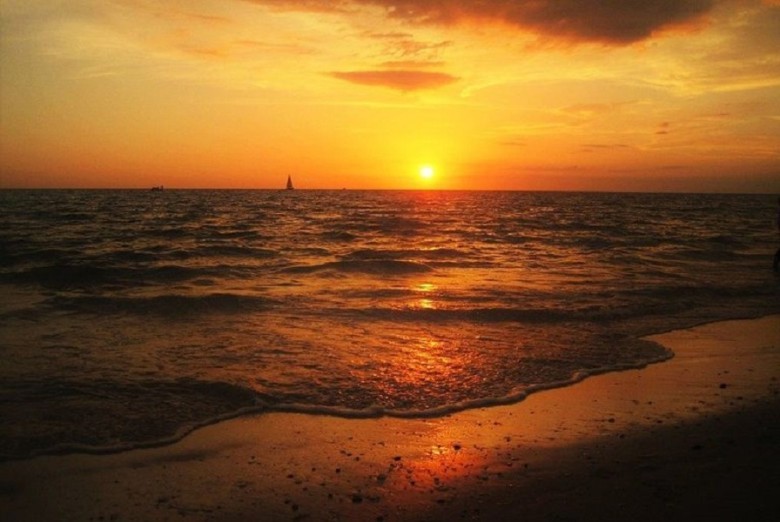
In a gripping interview with People Magazine, James recounted the additional dangers he faced during his ordeal. He revealed, "Not only did I have to contend with relentless waves and chilling water, but I also found myself crossing paths with not one, but two entire schools of jellyfish. Their painful stings covered my legs, arms, and even reached my neck." The excruciating encounter with the jellyfish was just the beginning of the challenges James encountered as he grappled with the immense risks and unpredictable obstacles presented by the unforgiving open sea.
A Moment of Respite
In a stroke of luck, James came across a piece of driftwood floating in the vast expanse of the ocean. It offered a temporary respite, allowing him to rest and gather his strength, albeit briefly. Although far from an ideal solution, the makeshift platform provided a glimmer of hope in an otherwise dire situation. James clung to it, clinging to the slim chance that it would help him survive even just a little longer.
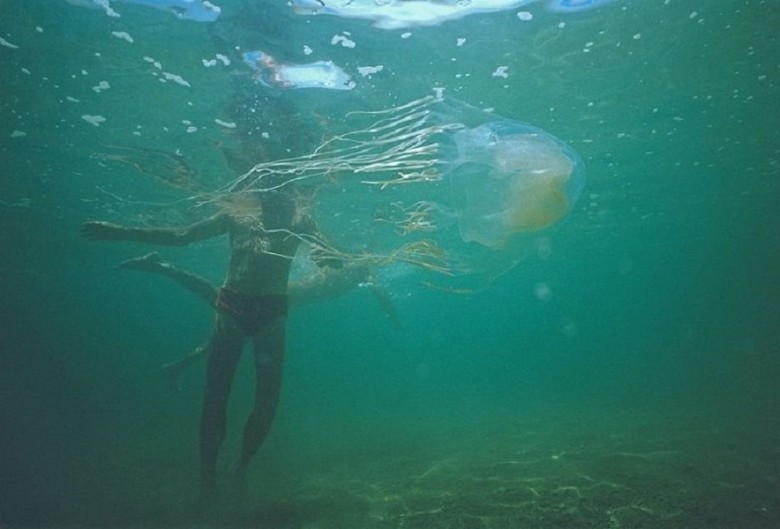
Balancing precariously on the driftwood, James's mind raced with thoughts of his family, the possibility of rescue, and the unbearable hunger that continued to torment him. He knew that time was running out, and with each passing moment, his chances of survival diminished. However, in this brief lull, he mustered the determination to keep fighting, despite the overwhelming odds stacked against him.
Looking back on this moment during his interview, James recounted the fleeting sense of relief and the overwhelming surge of hope that coursed through him. It was a momentary reprieve from the relentless struggle, a pause in the battle against the elements. Holding onto this sliver of hope, he gathered his remaining strength, ready to face whatever challenges lay ahead.
Pressing On
The hunger continued to gnaw at him, a constant reminder of the dire circumstances he found himself in. James knew that finding sustenance was crucial if he were to endure the trials that lay ahead. However, in the vast expanse of the open sea, provisions were scarce, and the hunt for food became a desperate endeavor.
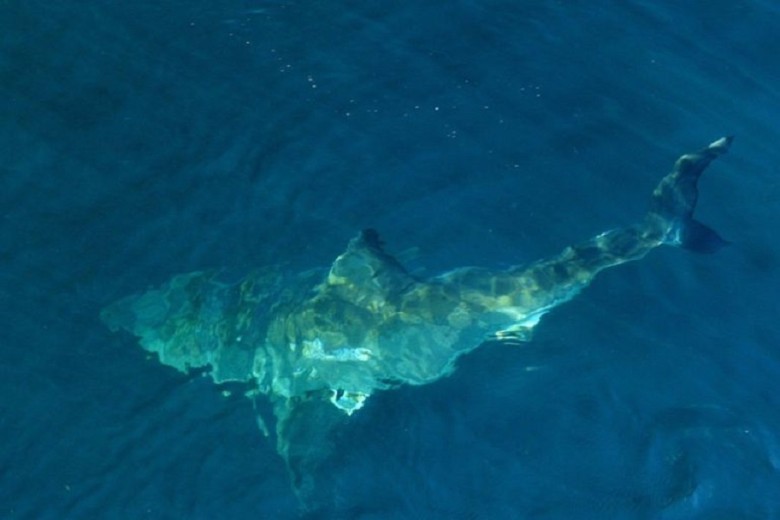
Driven by instinct and the will to survive, James turned his attention to the surrounding waters, searching for any sign of nourishment. He scanned the horizon, hoping to catch a glimpse of something, anything that could provide sustenance. But the vastness of the ocean yielded no immediate solutions.
Hours turned into days, and hunger became a constant companion, threatening to consume him from within. Each passing moment brought him closer to the brink of physical and mental exhaustion. Yet, James refused to give in to despair. With unwavering determination, he pressed on, pushing his body and mind to their limits in the quest for survival.
A Life Hanging in the Balance
Countless hours passed, and James's battle against the elements and the perils of the open sea took their toll on his body and spirit. The weight of the unknown, the constant hunger, and the merciless forces of nature challenged his resolve at every turn. But through sheer willpower, he defied the odds and clung to the slim hope of rescue.
In the darkest moments, when despair threatened to overshadow his dwindling strength, James thought of his loved ones, his family waiting anxiously for any news of his survival. Their unwavering support echoed in his mind, fueling his determination to keep fighting. He embraced their love as a lifeline, a source of strength and resilience in the face of unimaginable adversity.
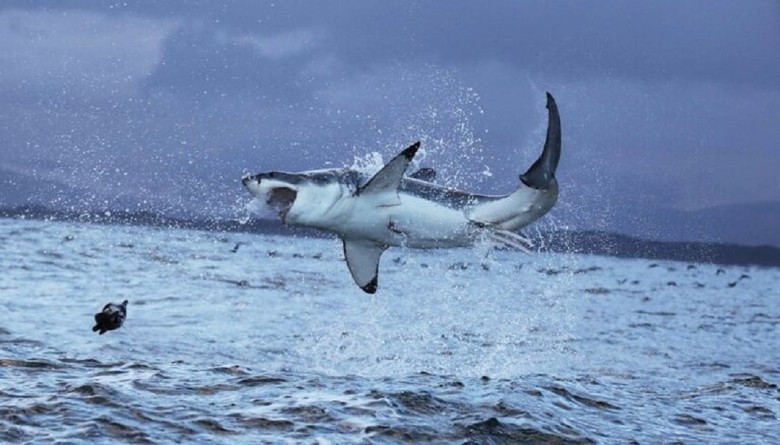
The journey was far from over, and James understood that the ultimate outcome remained uncertain. With each passing day, the challenges multiplied, and the risks grew ever more daunting. But life, he realized, is a precious gift worth fighting for with every ounce of one's being.
As James's harrowing tale unfolded, it became abundantly clear that his survival was nothing short of a triumph, a testament to the indomitable human spirit. In the face of untold hardship, he emerged as a symbol of resilience, hope, and the relentless pursuit of life's greatest prize – survival against all odds.
The Battle Against Hunger
Regrettably, James faced more than just the dangers of sharks and the treacherous open sea. Hunger soon became an agonizing torment. Floating for hours without sustenance, his stomach growled in agony, adding an extra layer to his already desperate situation. The absence of food depleted his energy reserves and impaired his mental focus, making each passing hour excruciating.
The lack of food had a profound impact on James's energy levels, presenting a significant concern. However, a stroke of luck temporarily improved this dire aspect of his circumstances. He stumbled upon a floating piece of driftwood that, albeit briefly, provided a makeshift platform.
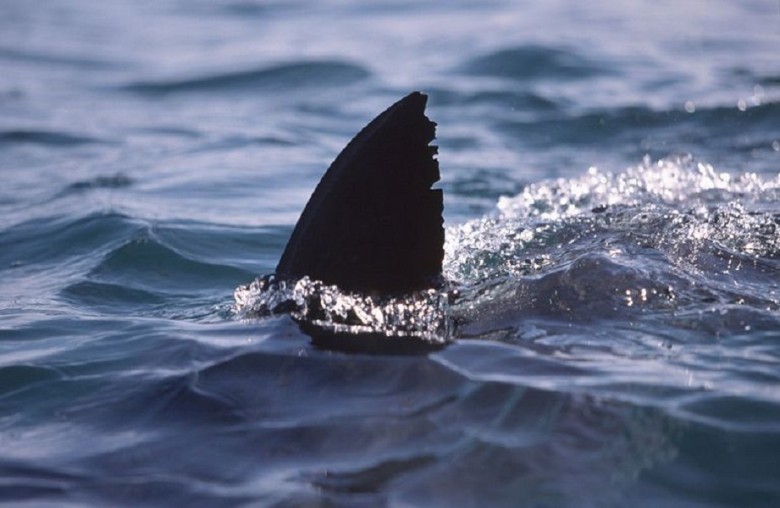
In a gut-wrenching interview with "Good Morning America," James revealed another surprising detail about his harrowing journey. "At one point, I came across a piece of floating wood that resembled bamboo. In my hunger and desperation, I attempted to chew on it. While it didn't taste pleasant, it provided a momentary relief from the constant salty taste in my mouth." This grim episode not only showcases the extent of James's desperation but also highlights the resourcefulness and resilience he summoned in the face of overwhelming adversity.
Offering insights into the situation, Bigney, a renowned survival tactics expert, raised a thought-provoking concept that challenges conventional wisdom. She suggested that James might have survived even without the fortunate retreat of the marine creature. Bigney speculated that various factors, such as unwavering human resolve, the psychological fortitude stemming from his relationship with his daughter, or even sheer luck, could have synergistically contributed to tipping the scales in his favor during those harrowing hours at sea.
A Psychological Boost?
Bigney further shared enlightening commentary with Insider about our ability to withstand extended periods without food. "Thanks to millennia of evolution, our bodies have developed an incredible capacity for fasting when necessary," she explained. This understanding of our physiological makeup provides a fascinating backdrop for survival stories and delves into broader questions about human adaptability. Bigney's observations shed light on the remarkable resilience of the human body and the innate survival mechanisms honed over thousands of years.

Expanding on the factors that might have influenced James's survival, Bigney introduced a nuanced hypothesis regarding the bamboo he found floating beside him. According to her, the bamboo might not have provided significant nutritional benefits due to its low caloric content. However, the psychological boost that comes from having something—anything—to consume could have served as a valuable mental crutch, bolstering James's determination to persevere through overwhelming adversity.
Tapping into the Body's Reserves
Delving deeper into the topic of fasting, Bigney addressed the question of how long a human can realistically survive at sea without food. Based on her knowledge and research, most individuals have enough caloric reserves stored in their liver and adipose tissue to last approximately two days, possibly slightly longer. This timeframe emphasizes the urgency of any search and rescue operation in marine environments, particularly considering that even these stored reserves have limitations, and complications can arise when pushing the body beyond its adaptive capacities.

Discussing the intricate challenges of surviving at sea, Bigney stressed a crucial consideration that individuals in such dire circumstances must never overlook—the critical issue of water consumption. "Drinking salt water is an absolute no-go," she asserted, highlighting it as a potential pitfall that could rapidly worsen an already life-threatening situation. Her words served as a somber reminder that, despite the seemingly abundant water in the ocean, access to drinkable water remains distressingly elusive.
Moments of Doubt
Among the many challenges James faced, one question persists: How did he manage to avoid ingesting salty seawater, knowing the harmful effects it can have on the body? The intake of seawater can lead to dehydration and worsen an already dire situation. This detail cannot be overlooked when considering the struggles James endured while stranded at sea.
To be candid, even with an unwavering will to survive, there were moments when doubt threatened to overwhelm me. I found myself on the edge of despair, questioning if all my efforts, ingenuity, and determination would be in vain. Instead of succumbing to hopelessness, I paused to reflect on the hardships I had already overcome, drawing strength from those experiences to carry on.
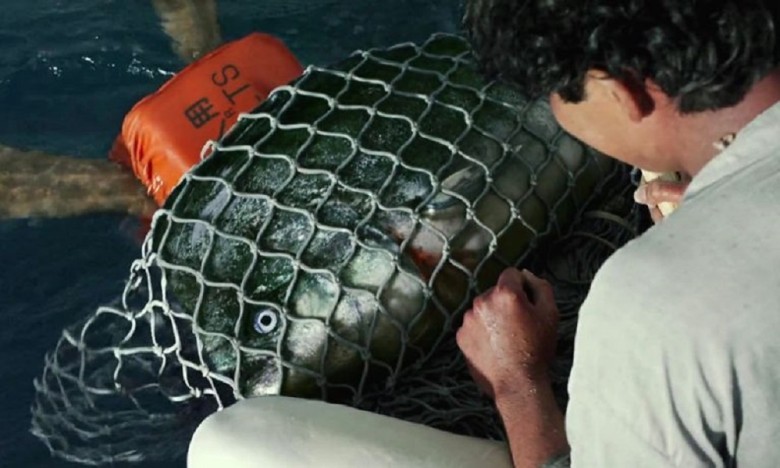
In an emotional admission, James shared, "As the night descended and the temperature dropped, I had a moment of deep introspection. I asked myself..." This profound self-reflection likely confronted James with his own mortality as he floated aimlessly in the dark abyss. These moments of inward contemplation may have served as a turning point, providing a renewed sense of purpose and resolve amidst the overwhelming darkness.
During those bleak hours, I often wondered, "How much more can I endure?" Yet, paradoxically, the fact that I survived the initial fall from the cruise ship and evaded predatory marine creatures fueled my irrational determination. It was as if these fortunate events served as signs, compelling me to believe that I had no choice but to find a way, no matter how improbable, to extricate myself from this life-threatening predicament.
A Driving Force
At the heart of James's struggle for survival was a powerful motivation: his love and concern for his family. Thoughts of his family ignited a fierce determination to overcome seemingly insurmountable obstacles and be reunited with his loved ones. These sentimental reflections provided an emotional anchor, grounding him in a reality that extended beyond the immediate terror and life-threatening circumstances he faced.

As I opened up in an interview with People Magazine, it became clear that my thoughts constantly revolved around my young daughter, Annabeth. Her image served as a psychological anchor, instilling a sense of urgency and purpose within me. To lift my spirits during those terrifying hours adrift, I even began improvising songs, deriving courage from the depths of my emotional reserves. Finally, after what felt like an interminable span of nearly 20 hours, a glimmer of hope appeared on the distant horizon.
The Final Push
In sharing his harrowing experience, James revealed even more dramatic details. "I spotted two ships in the distance and swam in their direction for hours, pushing myself to the limit. The prolonged exposure to the sun had taken a toll on my skin, and as night fell, I shivered violently due to fluctuating temperatures." This recollection vividly illustrates his multifaceted struggle, encompassing physical and mental challenges, along with the ever-changing environmental conditions.
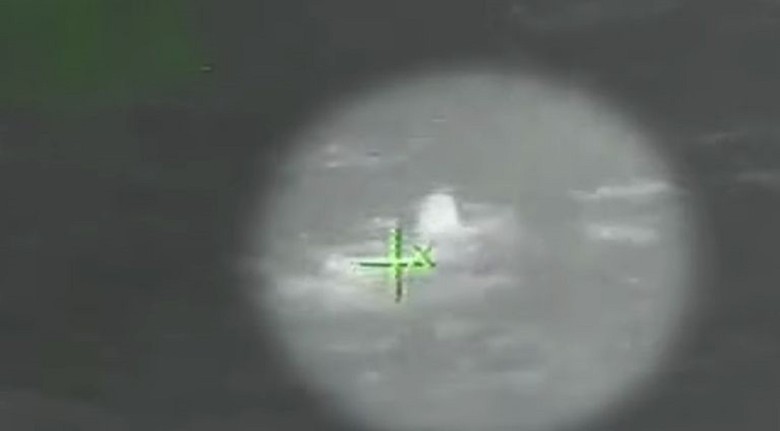
At that critical moment, an unshakable sense of desperation consumed me. It became undeniably clear that I had reached a point of no return: I had to make a final, all-out attempt to attract the attention of one of the passing boats. In that moment, I was acutely aware that this desperate act could very well be my last gamble in a series of increasingly perilous circumstances.
It Paid Off!
During his appearance on "Good Morning America," James spoke about his final burst of energy. "I was exhausted, out of breath, but giving up was never an option. I summoned every ounce of energy I had left to reach one of those ships, my last hope for survival." This last desperate push embodies the indomitable human spirit and the extraordinary lengths people will go to when faced with life-and-death situations.
Almost miraculously, my desperate efforts paid off when the vigilant crew of a passing vessel spotted me. They quickly alerted the Coast Guard to my precarious situation. It felt surreal, like a culmination of events against all reasonable odds that incrementally turned the tide in my favor.
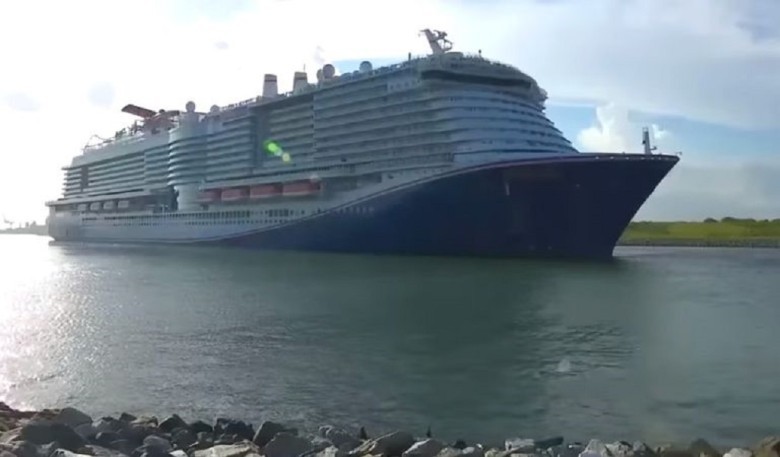
James also recounted the tense moment when the Coast Guard helicopter came to search for him. "The helicopter didn't just pass over once. It made multiple passes, and during that time, in a frantic act, I took off my socks and waved them above my head. My goal was to do anything possible to catch their attention and be spotted." It was a last-ditch effort, filled with urgency, reflecting the high-stakes nature of his ordeal and the narrow margin separating life from death in such situations.
In a surreal moment, the powerful beam of a searchlight from the hovering rescue helicopter finally pierced through the darkness, locking onto my position. The relief and hope I felt were indescribable as I heard a faint shout, seemingly emerging from another realm, proclaiming, "We've found him!" The sight of a rescue worker descending from the helicopter solidified a thought in my mind, a thought that had previously felt like a distant glimmer: "There truly is light at the end of the tunnel, and this unfathomable nightmare may actually be coming to an end!"
The Timing Was Vital
Richard Hoefle, an aviation survival technician, was the man responsible for this miraculous rescue. He emphasized the crucial timing of the rescue, stating that in his opinion, James "was truly at the end of his rope and had nothing more to give." This assessment underscores the perilousness of the situation and the almost miraculous nature of James's rescue, highlighting the extraordinary efforts of both the survivor and the rescue team.
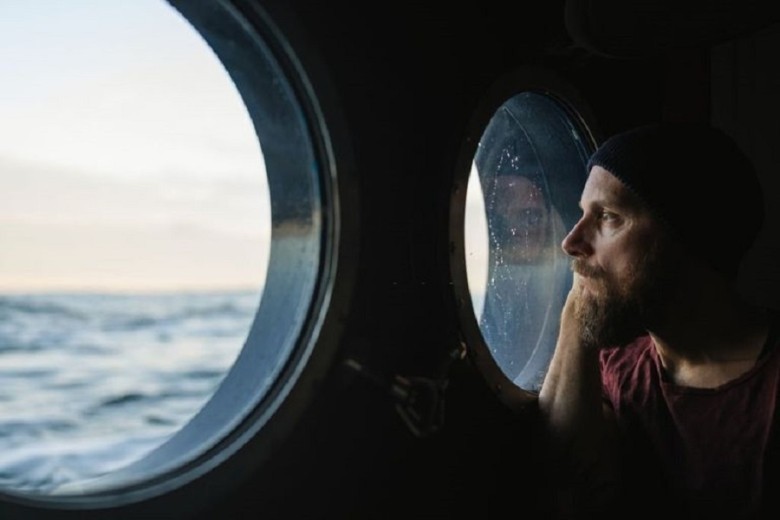
James, on the brink of complete physical and emotional collapse, managed to grasp onto the rescue harness that Hoefle extended down to him. It was as if he had finally surrendered to the overwhelming torrent of exhaustion and relief that had been building within him for hours. In a twist of fate that defied logic, he was now safely removed from the dangers of the unpredictable and unforgiving sea, a victory against seemingly insurmountable odds.
James's Recovery
After the terrifying experience and his ultimate rescue, James was immediately taken to a nearby hospital for medical treatment. He stayed there for five days to recover but was faced with a new set of financial challenges due to the lack of health insurance coverage for his medical bills. This construction worker, who had faced death in the open sea, now had to navigate the complexities of healthcare expenses and financial survival.
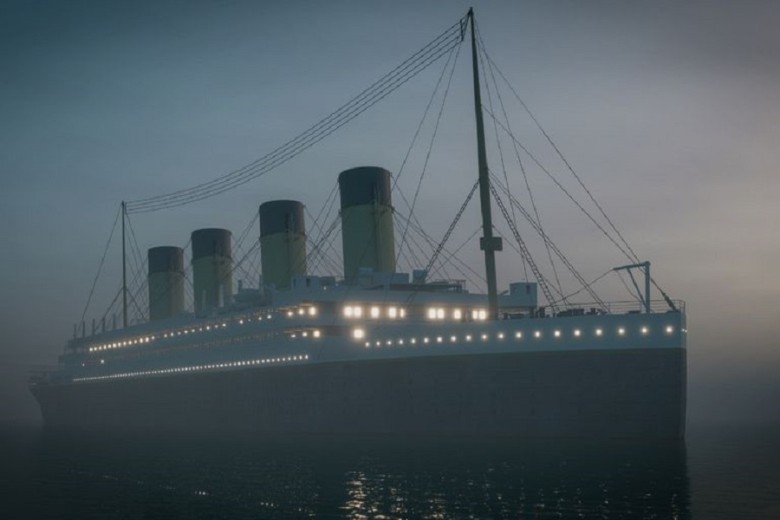
Displaying a remarkable blend of decisive leadership and heartfelt empathy, his sister took charge of the situation. Not content with simply expressing gratitude and relief, she swiftly organized a GoFundMe campaign to gather financial support for potential medical treatments and psychological counseling that James would likely need in the aftermath of this traumatic ordeal.
The GoFundMe Page
In a remarkable display of sensitivity to James's financial struggles following his near-death experience, Sherry Boleen initiated a crowdfunding campaign in early December 2022. The initial target was to raise $20,000 to help cover his mounting medical bills and other expenses. Since its launch, the campaign has gained significant momentum, thanks to the generous contributions of donors who have rallied behind James's incredible story. The donations have already reached nearly $15,000, and the funds continue to pour in. The overwhelming support from the community and beyond not only showcases the capacity for empathy within humanity but also provides a safety net for James as he navigates the complex landscape of healthcare costs and other financial challenges.
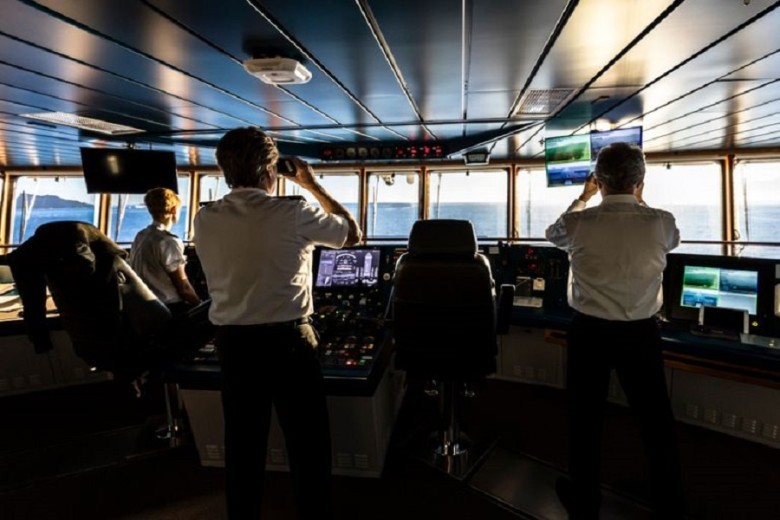
As the realization dawned on James that, although he emerged miraculously unscathed from the perilous encounter with the tumultuous waters of the Gulf of Mexico, a part of him had been fundamentally changed. This profoundly unsettling experience left an indelible mark on his very being, an irreversible transformation that would forever shape his view on life and its inherent uncertainties.
An Eye-Opening Experience
Speaking about his harrowing ordeal on "Good Morning America," James confessed, "It truly opened my eyes to the value of life and the things I may have taken for granted. Experiences like this have a way of making us realize just how precious every moment is—a lesson many of us learn too late." James's words encapsulate a deep existential realization that often only comes through facing life-and-death situations. It served as a transformative experience, prompting him to reassess his priorities and cultivate a profound appreciation for the fleeting nature of life. These lessons resonate deeply with those who hear his story.
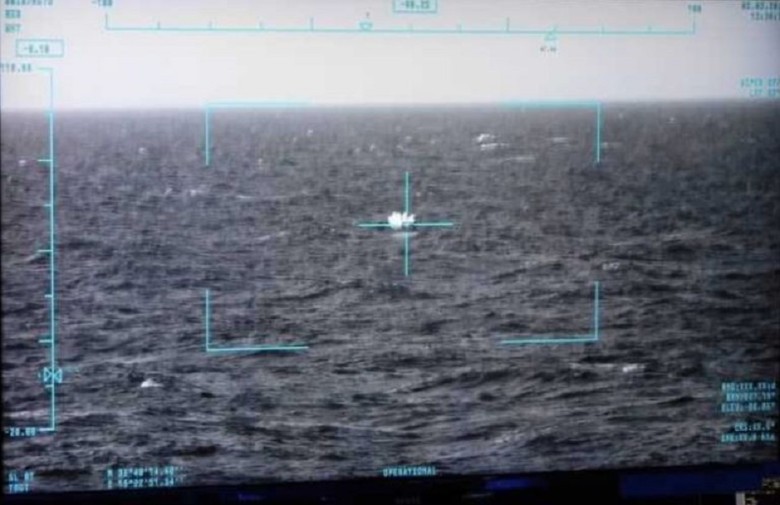
While the general expectation would be for someone to engage in a prolonged period of introspection and self-evaluation after enduring a heart-stopping, life-altering experience, James, always an unpredictable character, had another surprising revelation to share. It served as the pièce de résistance in a series of events that defied rational explanation.
A Surprising Revelation
When asked whether he would consider going on another cruise in the future, James swiftly responded, "Absolutely, I will. An experience as traumatic as this won't deter me from fully embracing life." His resolute answer signifies an indomitable spirit that refuses to be defeated by past trauma. It exemplifies a philosophy of resilience and a thirst for life that remains unquenched, even after coming dangerously close to losing it. This attitude serves as an inspiration to others confronting their own challenges, demonstrating that even the darkest moments can serve as stepping stones toward a more enriching and appreciative life experience.

Injecting a touch of lightheartedness that hinted at his dramatically altered perspective on the world, James quipped, "In the future, you'll find me maintaining a healthy three-meter distance from any and all guardrails. But don't think for a second that I've ruled out the possibility of going on another cruise. Given the turn of events, I can't exactly say I got to enjoy the last one, can I?"
Not Just an Accident
James's gripping tale of survival resonated deeply, particularly in light of another incident involving a passenger who fell off a cruise ship. However, unlike James, Kay Longstaff, a 46-year-old British woman, faced significant criticism for her account of the events. Her story serves as a contrasting narrative that underscores how public perception can widely differ, despite seemingly similar life-threatening experiences at sea.

In contrast, while the majority of passengers were fully engrossed in the joyous festivities on the concluding night of their week-long nautical adventure, Longstaff found herself trapped in a living nightmare that defied imagination. It was a horrifying and disorienting counterpoint to the jubilant atmosphere that engulfed the rest of the ship.
Plunged Into The Sea
On August 18, 2018, Kay Longstaff and her boyfriend, Craig Rayment, boarded the Norwegian Star. The cruise ship had departed from the Croatian port of Vargarola, embarking on the final leg of a Mediterranean voyage that had taken them to Kotor in Montenegro, several Greek islands, and finally, to Dubrovnik in Croatia. The backdrop of their journey sets the stage for the dramatic and contentious events that would swiftly unfold, leaving more questions than answers in their wake.

As the Norwegian Star gracefully traversed the waters en route to its illustrious final destination of Venice, Italy, an unimaginable calamity struck without warning. Close to midnight, around 11:45 p.m., Longstaff found herself teetering off-balance on the ship's seventh deck. In a heart-stopping instant, she hurtled downwards into the chilling embrace of the Adriatic Sea, vanishing into the darkness and icy waves below.
The Boyfriend’s Movements
Conflicting narratives surround the chain of events after Longstaff's disappearance. According to some accounts, her boyfriend, Craig Rayment, realized she was missing and started a frantic search throughout the ship. For several hours, he meticulously combed through every area, filled with increasing concern and hoping to find her safe and sound.

After extensive but unsuccessful search efforts, Rayment reported Longstaff's absence to the ship's personnel. It is said that he remained unaware of the catastrophic situation until awakened by crew members eager to investigate her disappearance, adding another layer of distress to the already horrifying event.
Finding a Clue
Another interpretation suggests that crew members discovered Longstaff's abandoned personal belongings on the ship, leading them to the alarming conclusion that she had likely fallen overboard. This discovery intensified the urgency of the situation, as the found items served as ominous evidence, heightening the probability of a tragic outcome and escalating the search efforts.

Regardless of minor discrepancies in these accounts, the unfortunate truth remained: Longstaff had vanished under mysterious and distressing circumstances. The Norwegian Star swiftly changed course, directing all efforts toward locating the missing woman.
No Signs of Her
Unfortunately, initial attempts to locate Longstaff proved fruitless. As dawn broke, apprehension about her safety grew. While the Norwegian Star continued its journey to Venice, a distress call was sent to the Croatian Coast Guard, requesting additional assistance. This reflected the mounting desperation and high-stakes nature of the search, knowing that every passing moment decreased the chances of a positive outcome. The involvement of the Coast Guard underscored the seriousness of the situation and the shared determination to find Longstaff, regardless of the outcome.
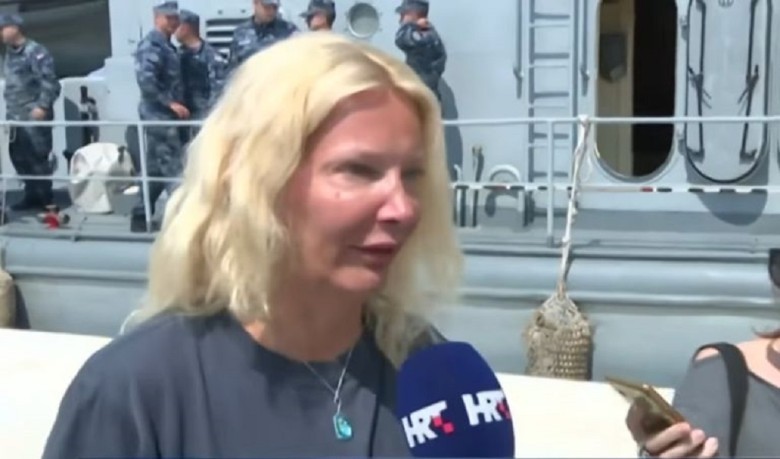
At 6:30 a.m., a complex and coordinated rescue mission went into action, involving maritime and aerial resources working together. The goal was singular: to locate Longstaff in the vast expanse of the Adriatic Sea.
Examining CCTV Footage
During that time, rescue teams utilized the ship's surveillance footage to pinpoint the exact time and location of Longstaff's fall. This crucial information streamlined the search efforts, optimizing resource utilization and significantly increasing the chances of finding her. By narrowing down the search radius, they focused their attention on a more specific area of the vast sea, transforming what could have been an impossibly broad search into a targeted operation.
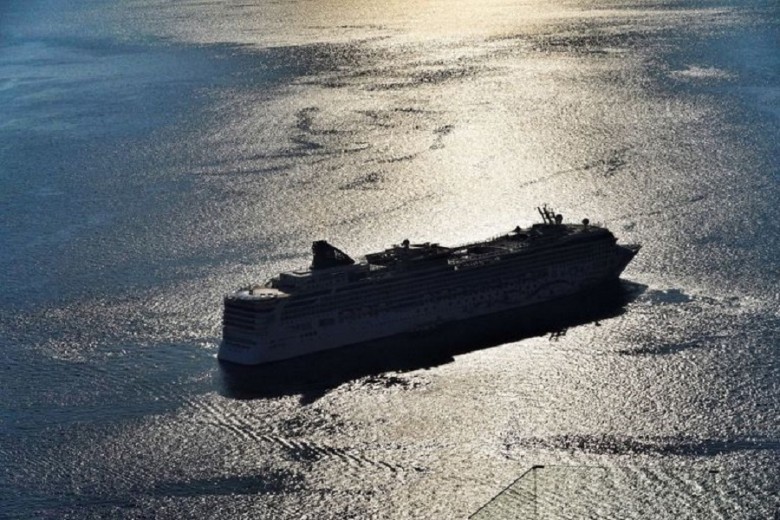
David Radas, an official from the Croatian Ministry of Maritime Affairs, explained in an insightful interview with the BBC, "Knowing the precise moment of Longstaff's fall overboard allowed us to retrace the ship's trajectory with pinpoint accuracy." According to Radas, the incident occurred approximately 60 nautical miles away from the Croatian coastline.
Drifted a Mile
Finally, at 9:40 a.m. on August 19th, the crew of a Croatian Coast Guard boat located Longstaff floating adrift in the open sea. Astonishingly, she had drifted merely a mile away from where she fell, defying the odds given the challenging and unpredictable ocean currents and winds. The proximity to her initial drop point proved crucial in her timely rescue.

Almost as soon as the mission began, an individual bravely jumped into the tumultuous Adriatic Sea, focused on helping Longstaff ascend to the safety of the rescue boat. In a miraculous turn of events, she was located in the vast expanse of water and appeared to be mostly unharmed, considering the harrowing ordeal she had endured.
Almost Gave Up
Longstaff had endured a distressing ten hours immersed in the water when her spirits were nearly extinguished, and she resigned herself to her impending fate. However, a sudden glimmer of hope emerged as the rescue team appeared, defying the darkness that enveloped her. This pivotal moment not only saved her life but also demonstrated the remarkable resilience and unwavering determination of the human spirit.

At the brink of despair, as Longstaff grappled with the grim certainty that rescue was beyond reach, a miraculous sight unfolded before her. Like a vision, a rescue boat materialized, cutting through the water, offering a surreal lifeline. This extraordinary occurrence was corroborated by an anonymous source who shared the account with the Daily Mail in 2018.
Receiving Medical Treatment
Following her remarkable rescue, Longstaff was swiftly transported to the General Hospital in Pula, Croatia, for urgent medical attention. There, she remained under the vigilant care of hospital staff, ensuring her stabilization and guarding against any potential long-term consequences from her prolonged exposure to the elements. Given the life-threatening conditions she had endured, immediate and comprehensive medical aid was critical.
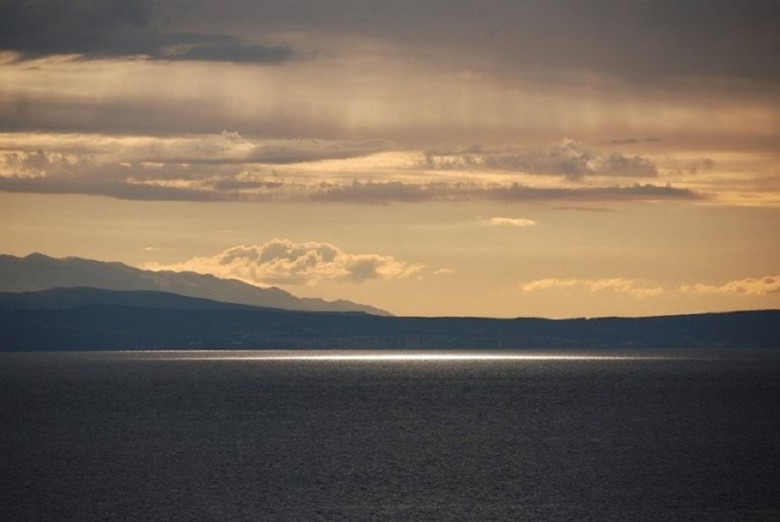
Although Longstaff exhibited clear signs of hypothermia and a noticeable facial injury, she received swift medical treatment, defying the odds and preserving her life. During this emotionally fraught time, reports suggest that she experienced a profoundly emotional reunion with her partner, Rayment, who was also on board the ship.
Her Surprising Condition
The news of Longstaff's survival sparked a mixture of shock and relief, particularly due to the extraordinary length of time she had been lost at sea. Dr. Irene Hrstic of Pula General Hospital expressed her astonishment to the Daily Mail, stating, "It's simply incredible that she's in such good condition after spending ten hours in the sea." The medical community and the public alike were captivated by her resilience and strength in the face of such extreme circumstances.

Among the companions who had embarked on the voyage with Longstaff, a palpable tension and anxiety permeated the air until the astounding news of her miraculous rescue reached them. It was then that a collective sigh of relief resounded—a chorus of gratitude and amazement echoed within their tightly-knit group. The emotional weight was lifted, replaced by a shared sense of joy and appreciation that transcended words.
Crediting her Fitness
Understandably, Longstaff was immensely relieved and grateful to have been rescued from the harrowing ordeal. In a subsequent interview, she acknowledged the remarkable stroke of luck that spared her from a potentially fatal outcome. However, she also attributed her incredible endurance to her dedicated practice of yoga, which cultivated her physical resilience and allowed her to remain buoyant for an extended period in the water.
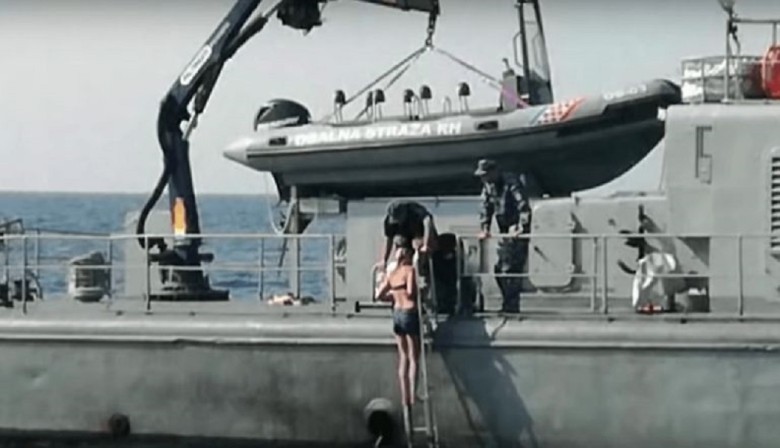
Additionally, she took proactive steps to maintain her morale by singing to herself, finding solace and distraction amidst the loneliness of the open sea.
Longstaff's Statement
"I fell off the back of the Norwegian Star and spent about ten hours fighting for my life in the ocean," said Longstaff. "Thankfully, these wonderful rescuers managed to find me." However, what initially seemed to be an inspiring and heroic tale of miraculous ocean rescue quickly evolved into a more complex and darker narrative, raising questions that cast shadows over the incident.
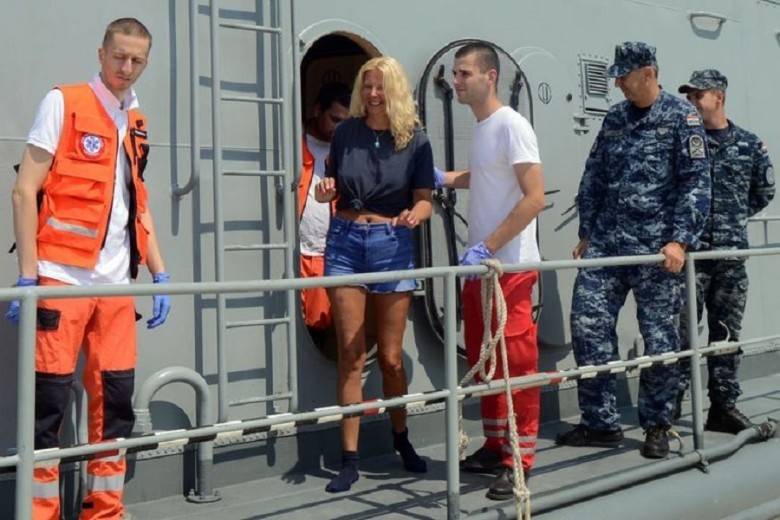
A curious subplot has emerged regarding the incident, raising questions about the circumstances under which the flight attendant found herself in the water. According to select passengers who accompanied her on the voyage, it's plausible that her plunge was not a mere accident, but a deliberate act. They argue that she may have intentionally jumped, adding a layer of enigma and complexity to an already bewildering sequence of events.
Spotted Arguing
According to witness accounts, Longstaff had been seen arguing multiple times with her boyfriend, Craig Rayment, during the course of the cruise. These disputes also reportedly occurred on the night of her disappearance. Additionally, one of the ship's passengers stated that the crew did not initially treat the incident as if it were an accident, adding another layer of intrigue and complexity to an already baffling case.
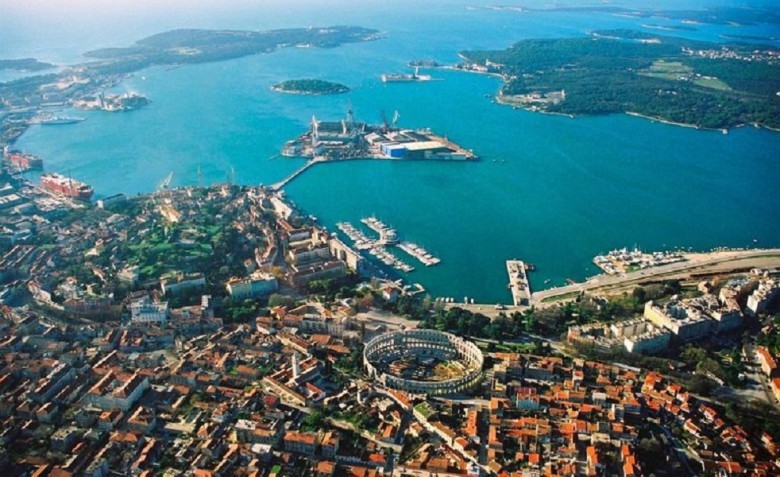
"Our slumber was abruptly shattered in the dead of night by ear-piercing alarms that jolted us awake, swiftly followed by a formal announcement from the ship's captain," vividly recounted Eddie Palladino, sharing his firsthand experience with the Daily Mirror back in 2018. His account provided an insider's perspective on the jarring wake-up call that sent waves of panic throughout the ship.
Report of a "Jumper"
"The captain spoke in these exact words: 'I must inform you that we have an emergency situation on board. It has been reported that an individual has jumped off the ship, and we are currently engaged in a high-seas search and rescue operation'," detailed a passenger named Palladino, emphasizing the urgent and grave nature of the situation.
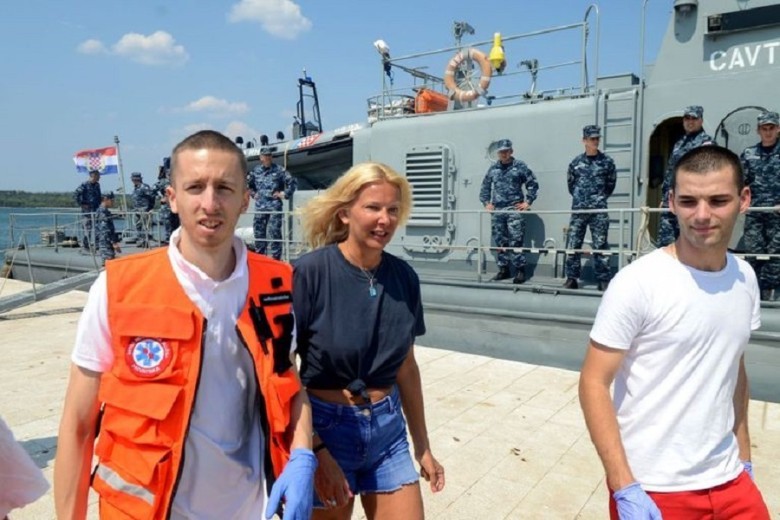
Moreover, Palladino went on to place considerable emphasis on the architectural features designed to enhance safety on the ship, notably the guardrails' significant height. He argued that given such precautionary designs, it would be exceedingly improbable for someone to simply tumble overboard inadvertently. This observation casts further doubt on the initial assumption that her fall was purely accidental, thereby fueling ongoing speculation about what actually transpired.
6-Foot Railings
Palladino later clarified in an interview with the Daily Mirror about the ship's safety design, "It's important to note that the railings on board the ship are extremely high. Being 6 feet myself, I would have to literally pull myself up and climb to get over these barriers. It's highly unlikely that Ms. Longstaff accidentally fell overboard." His statement threw yet another wrench into the unfolding narrative, raising concerns about the possibility that her fall may not have been accidental, and thus adding another layer of complexity to an already perplexing and unsettling incident.

Adding yet another twist to the evolving narrative, it was reported that Longstaff's shirt was discovered, conspicuously abandoned, on the deck of the ship. This revelation comes in addition to accounts from some passengers who claimed they witnessed her consuming alcohol on the fateful day she vanished, layering additional complexity and ambiguity to the already convoluted tale of her mysterious disappearance.
No Known Cases
Andy Harmer, a representative from the Cruise Lines International Association, added fuel to the fire of speculation by suggesting that Longstaff might have deliberately jumped off the ship. His statement provided further credence to the growing chorus of voices questioning whether her actions were voluntary, thus throwing the nature of the incident into deeper controversy and adding another layer of complexity to the already multifaceted situation.
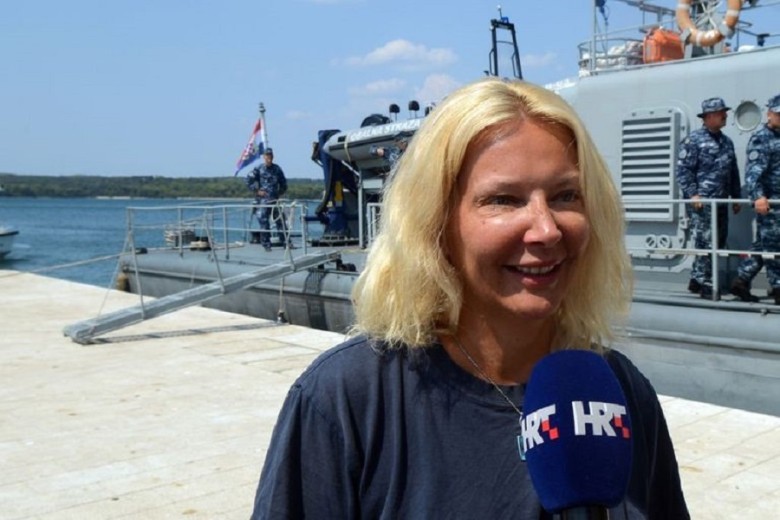
Elaborating on the safety dynamics of cruise ship railings in a comprehensive statement to The Guardian back in 2018, he asserted, "Based on what I know and have studied, there is not a single documented instance in which a person, who was exercising a reasonable level of responsibility and caution, has accidentally found themselves tumbling over the railing of a cruise ship. The infrastructure and safety measures on these vessels are specifically designed to prevent such occurrences."
Reporters Speculate
Despite Harmer's suggestions, there remains a divergence in reports concerning Longstaff's presumed mental state at the time of the incident. Eyewitness accounts and psychological evaluations offer conflicting analyses, adding yet another dimension of complexity to an already enigmatic case. This has led to intense debate and speculation, further muddying the waters in an attempt to understand Longstaff's motivations and mental condition.

In an effort to provide additional context to his testimony, he further noted, "It's worth mentioning that only a few weeks prior to this unsettling event, I had the pleasure of spending a leisurely afternoon sunbathing alongside her. Our interaction was cordial and completely normal, revealing no signs that could potentially hint at the calamity that would soon unfold."
Father Speaks Out
Adding to the narrative, information from the Daily Mail revealed that Longstaff's father, Ron, acknowledged that his daughter was going through a challenging phase in her life. The newspaper quoted Ron as saying, "She's been having a very difficult time," and added, "She wouldn't want to upset me, but unfortunately she does." Interestingly, it wasn't until Ron saw the television coverage that he became aware of the life-threatening ordeal his daughter had just undergone, making the situation even more emotionally charged for the family.
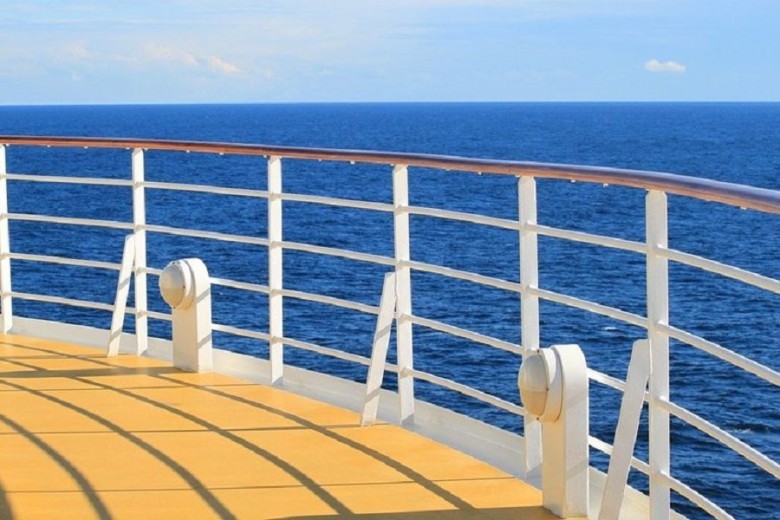
Challenging some of the speculative narratives that had been circulating, Ron, the young woman's father, vehemently disputed any notion that his daughter might be grappling with emotional or psychological challenges during that period of her life. In a decisive manner, he declared such allegations to be "utter nonsense," effectively dismissing them as unfounded rumors, according to information disseminated by The Guardian.
Suspicion Grows
By the time the calendar reached August 21, a thickening atmosphere of doubt and suspicion had begun to envelop the increasingly enigmatic case of Longstaff's disappearance at sea. The narrative took a pivotal turn that day, guided by revelations from an anonymous source who spoke candidly to The Sun, a leading British tabloid. The source's revelation was nothing short of transformative: "After meticulously reviewing the extensive surveillance footage available from multiple angles on the ship, it has become unequivocally clear that she was entirely alone in the moments leading up to her mysterious disappearance into the ocean." This revelation didn't just add a layer of nuance to the existing theories—it significantly bolstered the hypothesis that Longstaff's actions might have been willful, perhaps even premeditated, in nature. Contradicting earlier speculations that had left room for the possibility of a tragic accident or some form of malicious interference, the source's statement shifted the focus squarely onto Longstaff's personal motivations and state of mind at the time of the incident. The implications were immediate and manifold, inviting a flurry of renewed scrutiny and fostering an environment where skepticism flourished. If Longstaff was indeed alone, as indicated by the allegedly comprehensive review of the surveillance footage, the likelihood of external factors like accidental slips or another individual's involvement considerably weakened, practically fading into obsolescence. In their place surged a tide of conjecture, geared toward dissecting Longstaff's psychological state and personal circumstances leading up to that fateful moment. This new information prompted both the public and the investigators to reevaluate previously held assumptions, casting the entire case into a maelstrom of questions, uncertainties, and moral complexities. The statement acted as a catalyst, stimulating further inquiries that ranged from Longstaff's emotional well-being to potentially undisclosed personal crises that might provide some rationale for such a drastic act. While Longstaff herself remained conspicuously silent throughout, her absence from the conversation only served to heighten the intrigue and deepen the riddles surrounding her case.
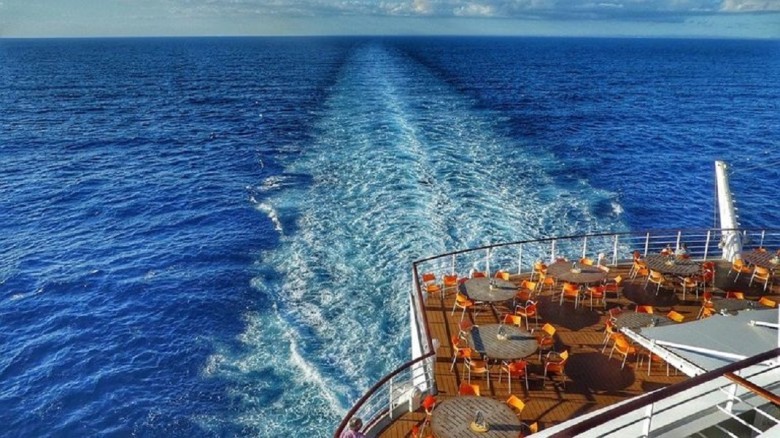
In light of the ongoing investigation, the dominant working theory at this point strongly leans toward the likelihood that she made a premeditated decision to leap into the ocean. "Contrary to some speculations that she might have been pushed overboard, we are directing our investigative resources toward the hypothesis that she made a conscious, deliberate choice to jump," the authorities clarified, indicating the current focus of their inquiry.
No Comment
Despite the mounting speculations and theories about what really happened aboard the Norwegian Star, Longstaff herself has remained conspicuously silent, offering no public statements to clarify or refute the swirling allegations. Her silence has only contributed to the growing mystery and intrigue surrounding this disconcerting case, leaving many questions unanswered.
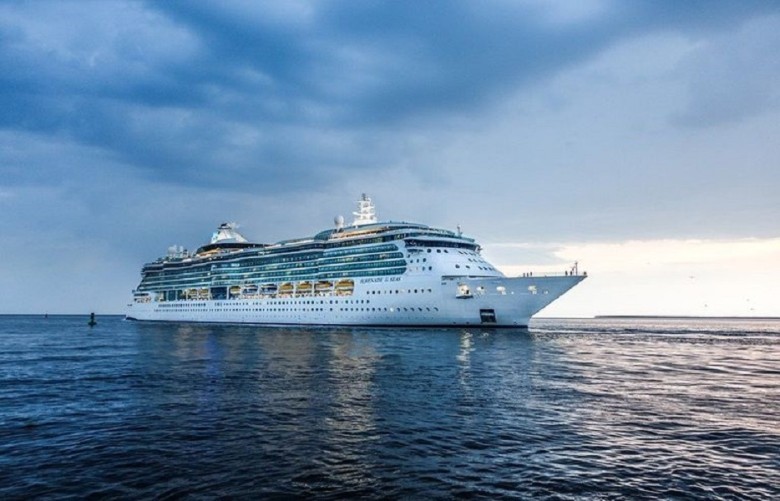
Interestingly, her concerns appeared to transcend her immediate peril. She was acutely aware of the enormous financial burden associated with such a large-scale search and rescue operation, a cost that reached into the hundreds of thousands of dollars. "She was explicit in questioning whether she would be held financially responsible for the exorbitant expenses incurred during the search and rescue mission," divulged a member of the rescue team in a formal statement to The Sun.
Backlash
It's worth noting that, despite international agreements exempting Longstaff from being responsible for the cost of her rescue, some commentators have controversially suggested that she should bear the financial burden of the operations. Moreover, other passengers have expressed dissatisfaction with the way Norwegian Cruise Lines managed the incident, contributing to a broader narrative of discontent and questioning of the company's protocols.
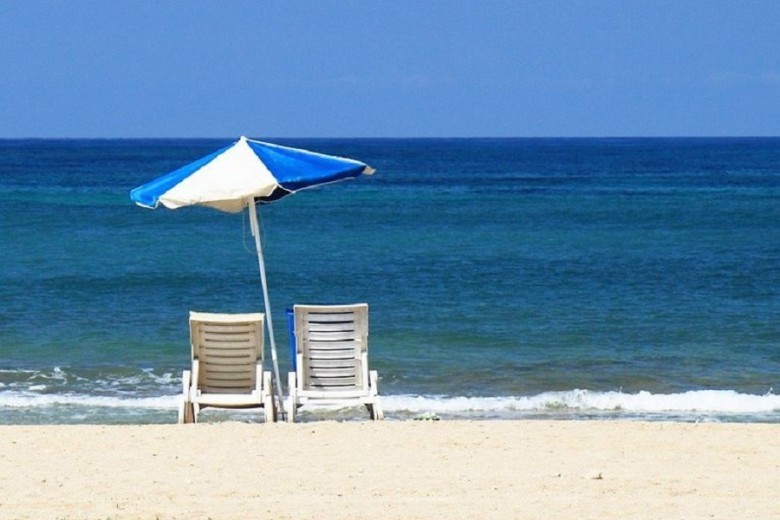
Offering an observer's perspective on the unfolding drama, one witness commented to the BBC, "The entire episode was undoubtedly chaotic and stressful for everyone involved, from the search and rescue teams to the ship's crew and passengers. However, I believe that the management of this high-stakes incident could have been significantly more effective and coordinated, potentially easing some of the prevailing tension and confusion."
Delayed Journey
Another aspect worth exploring in greater detail is the disruptive impact Longstaff's enigmatic episode had on the overall collective experience aboard the Norwegian Star. The ship's eight-hour delay in arriving at Venice was more than just an inconvenience; it was a tangible disruption to the vacation plans of numerous passengers. This delay prompted a cascade of complaints from various guests who understandably were displeased that their carefully crafted vacation plans were derailed by Longstaff's ill-fated adventure. This situation has sparked additional, perhaps more philosophical, discussions about the social contract within shared experiences like cruises. Specifically, it has sparked considerations about the extent to which an individual's actions, intentional or not, can significantly impact the collective enjoyment, satisfaction, or even safety of a larger group, especially in communal and leisure-oriented settings.

Passenger Joan Berry expressed her frustration to the Daily Mail by highlighting an often overlooked aspect of the incident: "The media's focus has been almost exclusively on the woman who fell overboard. But what about the other 2,000 passengers on board the cruise ship whose vacations were disrupted by this unforeseen event? Are their stories and inconveniences not equally deserving of attention? Their plans were abruptly changed, adding unexpected stress to what was supposed to be a relaxing journey."
Lucky to Live
Setting aside the whirlpool of speculation and controversy surrounding this bewildering case, there is one resounding truth that remains unalterable: Longstaff survived. Her survival is not just remarkable; it's practically miraculous considering the dangerous and potentially fatal conditions she faced. This aspect of her story serves as a beacon of hope amid an otherwise dark and confusing narrative. It stands as a testament to the astounding resilience of the human spirit and the unpredictable serendipity that can sometimes tip the scales in even the most harrowing situations where life and death hang in the balance.

In reality, statistics reveal that, on average, one person falls overboard from a cruise ship every month. What's noteworthy is that the vast majority of these individuals do not share the same stroke of luck as Longstaff, the British woman in question. So, what specific factors contributed to her exceptional survival? Was it purely luck, or were there conditions or choices that significantly increased her chances? These questions warrant a deeper exploration to understand what sets her case apart from the unfortunate many.
The Conditions
According to survival expert Mike Tipton, Longstaff's survival was not solely a matter of chance; it was facilitated, at least in part, by environmental conditions that were more favorable than one might expect. In an extensive interview with the BBC, Tipton elaborated on the crucial role of water temperature in human survival in marine settings. He revealed that the water temperature in the Adriatic Sea at the time was around a relatively warm 28 to 29 degrees Celsius, slightly higher than a typical swimming pool. This insight adds a nuanced, scientific dimension to our understanding of Longstaff's extraordinary resilience and survival, suggesting that she may have been aided by conditions that were less hostile than they could have been.
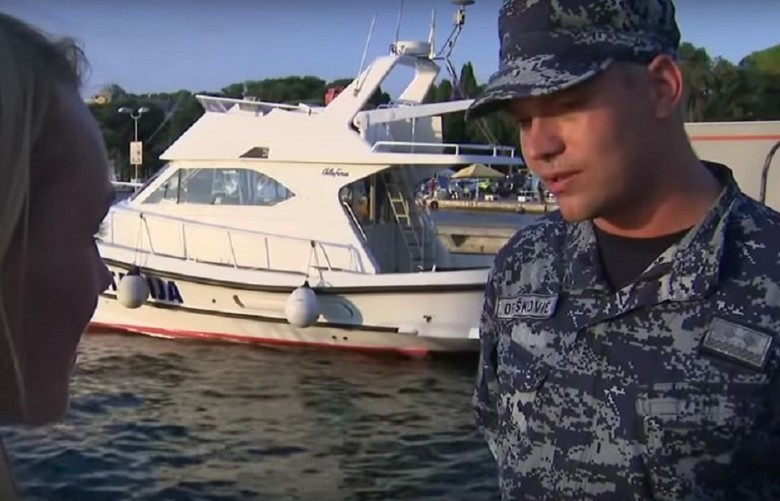
Additionally, an observer noted that Longstaff "was not battered by the choppy waves," a circumstance that undoubtedly facilitated her ability to stay afloat. This seemingly minor detail could have been a crucial factor that made the difference between life and death.
What's your reaction?
Facebook Conversations
Disqus Conversations
Today's Top Posts
-
 15
15 Rescued from certain doom: The incredible story of a fox found on an iceberg
-
 11
11 Breaking Through: Amélia's Empowering Birthday Revelation
-
 11
11 Tokyo's Wildest Shop: Where Stealing is Legal (Sort Of!)
-
 11
11 17 Breathtaking Embroidery Masterpieces That Will Ignite Your Creativity!
-
 10
10 Scientists Make a Discovery and Uncover Secrets About Ancient Human DNA
-
 10
10 This is How One Small Act of Kindness in a Cafe Sparked a Kindness Revolution.
-
 10
10 15 Hilarious Animal Photos That Will Have You in Stitches from the Nikon Comedy Wildlife Awards!
-
 9
9 Zoo Lion: King of Snacks and Silly Moments
-
 9
9 Giraffe Welcomes Tiny Giant: The Tallest Baby on Earth!
-
 9
9 Parrot Goes Full Comedian: Watch This Feathered Genius Roast Everyone!




















Comments
0 comment